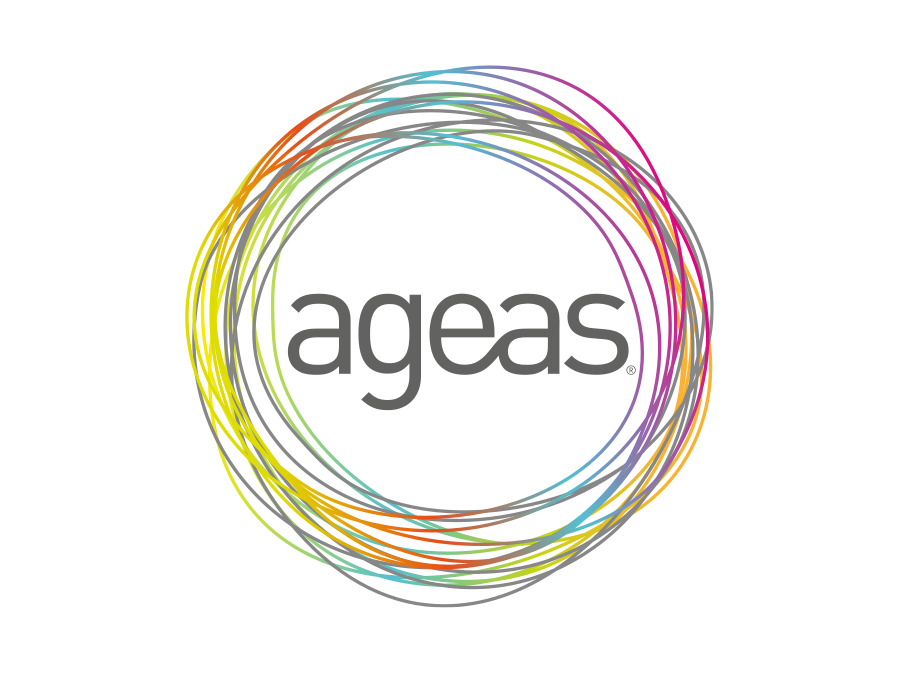UK's Financial Health Cliff 40% Risk Ruin

UK 2025 Shock Data Reveals Over 2 in 5 Britons Are Just Weeks From Financial Ruin if a Health Crisis Strikes, Fueling a Staggering £4 Million+ Lifetime Catastrophe of Debt, Home Loss & Eroding Family Security – Is Your LCIIP Shield Your Unseen Lifeline Against Sudden Income Loss
A silent crisis is brewing in households across the United Kingdom. New analysis for 2025 paints a stark and unsettling picture: more than two in five Britons (over 40%) are living on a financial precipice, just one unexpected health event away from potential ruin. For millions, a sudden illness or injury isn't just a medical emergency; it's the trigger for a devastating financial cascade.
This isn't mere speculation. It's the new reality of the UK's "Financial Health Cliff." A sudden stop in earned income due to sickness can unleash a lifetime catastrophe of debt, threaten the loss of the family home, and completely dismantle decades of financial planning. The potential lifetime financial impact for a higher-earning family can exceed a staggering £4.8 million in lost earnings, depleted pensions, and compounded debt.
In an era of economic uncertainty, your ability to earn an income is your single most valuable asset. Yet, it is often the most dangerously uninsured. While we diligently insure our homes, cars, and even our pets, we often overlook the one thing that pays for it all: ourselves.
This guide unpacks the startling 2025 data, explores the true cost of a health crisis, and reveals how a robust shield of Life, Critical Illness, and Income Protection (LCIIP) insurance is no longer a "nice-to-have," but an essential lifeline in modern Britain.
The 2025 Reality: A Nation on the Financial Brink
The headline figure is alarming but represents a trend that has been accelerating. The combination of a prolonged cost-of-living crisis, rising interest rates, and relatively stagnant wage growth has systematically eroded the financial resilience of British families.
A 2025 Financial Resilience Report highlights this vulnerability:
- 42% of UK adults report they would be unable to cover their essential living costs for more than two months if they lost their primary source of income.
- Within that group, a shocking one in three (around 14% of all adults) have less than one month's worth of savings, placing them in immediate jeopardy.
The Vanishing Savings Buffer
For generations, savings were the first line of defence. Today, that buffer is perilously thin. The pressure to meet monthly obligations—mortgage or rent, energy bills, food costs, and transport—leaves little room to build a substantial emergency fund.
| Time Period | Average Household Savings Ratio (UK) | Key Influencing Factors |
|---|---|---|
| 2020-2021 | 14.5% | Pandemic lockdowns, reduced spending |
| 2022-2023 | 8.7% | Cost of living crisis begins, inflation soars |
| 2024-2025 | 6.1% (Projected) | Sustained high interest rates, depleted savings |
Source: Analysis based on ONS and Bank of England data trends.
This data reveals a clear and worrying trend: the safety net that families could once rely on is disappearing. When that buffer is gone, any significant income shock immediately transforms into a debt crisis.
The Health Shock: When Your Biggest Asset Disappears
For most working people, their ability to earn an income over their career is worth millions of pounds. It is, without question, their biggest financial asset. Yet, a health crisis can make it vanish overnight.
The scale of long-term sickness in the UK is a national challenge. The latest ONS statistics on economic inactivity show a record number of people out of work due to long-term health conditions.
- Over 2.8 million people are economically inactive due to long-term sickness, a figure that has surged by over 700,000 since 2019.
- The most common reasons for long-term absence include musculoskeletal issues, mental health conditions (such as stress, depression, and anxiety), cancer, and cardiovascular diseases.
It’s a mistake to think these issues only affect the elderly. Cancer Research UK notes that around 1 in 2 people in the UK will get cancer in their lifetime. The British Heart Foundation reports over 100,000 hospital admissions each year due to heart attacks. These are not distant statistical probabilities; they are common life events that can strike anyone, at any age.
A Real-Life Example: Meet David
David is a 42-year-old software engineer, married with two children, and a mortgage on a family home in the Midlands. He earns £65,000 a year. One morning, he suffers a major stroke.
He survives, but his recovery is long and arduous, leaving him unable to work for at least 18 months, with lasting cognitive and physical impairments that may prevent him from ever returning to his high-pressure role. Suddenly, his family's primary income is gone. Their carefully planned life is thrown into chaos. This is the reality of a health shock.
Deconstructing the £4 Million+ Lifetime Catastrophe
The figure of a £4 Million+ catastrophe may seem extreme, but when you dissect the long-term financial consequences for a family like David's, the numbers become terrifyingly real. It's not a single loss but a chain reaction of financial devastation that unfolds over decades.
Let's model a plausible, albeit devastating, scenario for a 40-year-old professional earning £75,000 per year who is forced to stop working permanently due to a critical illness.
| Category of Financial Loss | Calculation & Explanation | Cumulative Impact |
|---|---|---|
| Lost Gross Earnings | £75,000/year for 27 years (to age 67) with no promotions. | £2,025,000 |
| Lost Pension Contributions | Lost employer/employee contributions (e.g., 10% of salary) + lost investment growth over 27 years. | £1,150,000 |
| Depletion of Existing Assets | Cashing in ISAs, investments, and emergency funds to live on in the initial years. | £150,000 |
| Debt Accumulation | Using credit cards/loans to cover shortfalls. Interest compounds significantly over time. | £250,000 |
| Lost Future Opportunities | Inability to help children with university fees, house deposits, or weddings. | £250,000 |
| Impact on Partner's Career | Partner may need to reduce hours or leave work to become a carer, losing their income and pension. | £1,000,000 |
| Total Lifetime Financial Catastrophe | The sum of all direct and indirect financial blows over a lifetime. | £4,825,000 |
This isn't an exaggeration; it's a conservative calculation of the financial ripple effect. It demonstrates how a single health event can dismantle a family's entire financial future, wiping out a lifetime of work and planning.
The State Safety Net: A Patchwork with Holes?
"But won't the government support me?" It's a common and understandable belief. While the UK has a welfare state, the financial support it provides is designed to be a basic safety net, not an income replacement. Relying on it alone is a high-stakes gamble.
Here’s what’s realistically available:
- Statutory Sick Pay (SSP): Paid by your employer for up to 28 weeks. The current rate is just £116.75 per week. This is a fraction of the average UK salary and is often insufficient to cover even basic bills.
- Employment and Support Allowance (ESA) / Universal Credit: After SSP ends, you may be eligible for these benefits if your illness or disability affects your ability to work. The amount you receive depends on your circumstances, but for a single person, the "new style" ESA can be up to £138.20 per week.
Let’s compare these figures to a modest monthly income.
Monthly Income vs. State Support (Example)
| Income Source | Gross Monthly Amount | Net Monthly Amount (Approx.) |
|---|---|---|
| Salary of £35,000/year | £2,917 | £2,295 |
| Statutory Sick Pay (SSP) | £506 | £506 |
| Employment & Support Allowance (ESA) | £599 | £599 |
The shortfall is stark and immediate. State benefits can prevent destitution, but they will not pay your mortgage, maintain your family's lifestyle, or fund your future goals. The gap between your current income and the state safety net is the chasm you and your family risk falling into.
Your LCIIP Shield: The Three Pillars of Financial Protection
This is where personal insurance moves from a theoretical product to an essential tool for survival. Life, Critical Illness, and Income Protection (LCIIP) cover are designed specifically to plug this financial gap and act as your family's financial 'first responder' in a crisis. They are the three pillars of a comprehensive financial protection strategy.
Pillar 1: Life Insurance
- What it is: A policy that pays out a tax-free lump sum to your loved ones if you pass away during the policy term.
- What it’s for: Clearing a mortgage, covering funeral costs, providing a family fund for ongoing living expenses, and securing your children's future.
- Who needs it: Anyone with financial dependents (a partner, children) or significant debts like a mortgage.
- Key Types:
- Term Life Insurance: Covers you for a fixed period (e.g., the length of your mortgage). It's the most common and affordable type.
- Whole of Life Insurance: Covers you for your entire life and is guaranteed to pay out. It's often used for inheritance tax planning.
Pillar 2: Critical Illness Cover (CIC)
- What it is: A policy that pays out a tax-free lump sum if you are diagnosed with one of the specific serious illnesses listed in the policy.
- What it’s for: Providing immediate financial breathing room upon diagnosis. The funds can be used for anything: paying off the mortgage, adapting your home, funding private treatment, or simply replacing lost income while you focus on recovery.
- What it covers: Policies typically cover dozens of conditions, with the most common claims being for cancer, heart attack, and stroke. Other conditions often include multiple sclerosis, major organ transplant, and Parkinson's disease. The exact definitions are crucial, which is why expert advice is vital.
Pillar 3: Income Protection (IP)
- What it is: Often considered the bedrock of financial protection, this policy pays a regular, tax-free monthly income if you are unable to work due to any illness or injury.
- What it’s for: Replacing a significant portion of your lost salary (typically 50-70%) to cover your day-to-day living costs. It pays out after a pre-agreed "deferment period" (e.g., 3, 6, or 12 months) and can continue to pay until you return to work, retire, or the policy term ends.
- Why it's so important: Unlike CIC, it covers almost any medical condition that stops you from working, including stress, depression, and back problems, which are leading causes of work absence but may not be covered by a critical illness policy.
Comparing the Three Pillars
| Feature | Life Insurance | Critical Illness Cover | Income Protection |
|---|---|---|---|
| Payout Trigger | Death or terminal illness | Diagnosis of a specified critical illness | Inability to work due to illness/injury |
| How it Pays | Tax-free lump sum | Tax-free lump sum | Regular tax-free monthly income |
| Primary Purpose | Protect dependents after you're gone | Financial relief during a serious illness | Replace lost salary during sickness |
| Best For | Mortgage, family living costs | Clearing debt, one-off costs | Covering monthly bills, lifestyle |
How LCIIP Works in Practice: David's Story Revisited
Let's return to David, the 42-year-old software engineer who had a stroke. Consider two alternate futures for his family.
Scenario A: Without Protection
- Month 1-6: David receives SSP of ~£500/month. His wife's salary covers some bills, but they have a £1,800/month shortfall. They drain their £10,000 emergency fund.
- Month 7-18: SSP ends. They apply for Universal Credit but the process is slow. They start missing mortgage payments and racking up credit card debt to buy groceries. The stress is immense.
- Year 2 onwards: David can't return to work. The mortgage lender begins repossession proceedings. They are forced to sell their family home, move into a smaller rental property, and their dreams for their children's future are shattered.
Scenario B: With a Comprehensive LCIIP Shield
David had wisely put protection in place a few years earlier.
- Upon Diagnosis: David's Critical Illness Cover pays out a £150,000 tax-free lump sum. They immediately use this to clear the remaining balance on their mortgage. Their single biggest monthly expense is eliminated. The relief is profound.
- After 6 Months: His pre-agreed deferment period ends. His Income Protection policy kicks in, paying him £3,000 every month, tax-free. This replaces a large chunk of his salary, allowing his family to pay bills, buy food, and live without financial fear.
- Peace of Mind: David's Life Insurance policy remains in place, ensuring that if the worst were to happen, his wife and children would receive another substantial lump sum to secure their long-term future.
In this scenario, a devastating health event becomes a manageable life challenge, not a financial catastrophe. The family can focus on what truly matters: David's recovery.
WeCovr: Navigating the Maze to Find Your Perfect Shield
Understanding the need for protection is the first step. The second, and equally crucial, step is navigating the complex insurance market to find the right cover at the right price. This is where an expert, independent broker is invaluable.
At WeCovr, we specialise in helping individuals and families across the UK build their bespoke LCIIP shield. We don't work for one insurer; we work for you. Our role is to:
- Understand Your Unique Needs: We take the time to learn about your family, finances, and future goals.
- Compare the Entire Market: We have access to policies from all the UK's leading insurers, including Aviva, Legal & General, Zurich, Royal London, and more. This ensures you see the best options available.
- Translate the Jargon: Critical illness definitions and income protection terms can be complex. We explain them in plain English, ensuring you know exactly what you're covered for.
- Tailor a Plan to Your Budget: Protection doesn't have to be expensive. By mixing and matching different types and levels of cover, we can design a robust plan that fits your budget.
Getting expert advice can prevent you from buying the wrong policy or paying too much for cover that isn't right for you. We help you make an informed decision that provides true peace of mind.
Furthermore, at WeCovr, our commitment to your well-being extends beyond just insurance policies. That's why we provide all our valued customers with complimentary access to CalorieHero, our proprietary AI-powered calorie and nutrition tracking app. We believe in proactive health management, empowering you to build a healthier future while we secure your financial one.
Common Myths and Misconceptions Debunked
Scepticism about insurance is common, often fueled by myths and outdated information. Let's tackle them head-on with the facts.
Myth 1: "It's too expensive."
Reality: The cost of cover is often far less than people assume, especially when you are young and healthy. For a healthy 35-year-old non-smoker, a meaningful level of cover can often be secured for less than the cost of a daily coffee or a monthly streaming subscription. The cost of not having it is infinitely higher.
Myth 2: "I'm young and healthy, I don't need it."
Reality: Illness and injury do not discriminate by age. In fact, you are far more likely to be off work for an extended period or be diagnosed with a critical illness during your working life than you are to pass away. Securing cover when you're young and healthy means you lock in lower premiums for the life of the policy.
Myth 3: "My employer provides cover, so I'm sorted."
Reality: Employer-provided benefits are a great perk, but they have significant limitations. "Death in Service" cover is typically a multiple of your salary (e.g., 4x) and ends the moment you leave your job. Sick pay schemes are often limited in duration. It's a "tied" benefit that leaves you exposed if you change careers or are made redundant. Personal policies belong to you, regardless of your employment status.
Myth 4: "Insurers never pay out."
Reality: This is perhaps the most damaging myth of all, and it is demonstrably false. The industry regulator, the Financial Conduct Authority (FCA), and the Association of British Insurers (ABI) publish annual payout statistics. They consistently show that the vast majority of claims are paid.
| Insurance Type | 2024 Payout Rate (ABI Data) | Total Amount Paid Out |
|---|---|---|
| Life Insurance | 97.3% | £4.10 Billion |
| Critical Illness Cover | 91.6% | £1.28 Billion |
| Income Protection | 92.9% (new claims) | £774 Million |
The message is clear: when you have a valid claim, insurers pay. The small percentage of declined claims are typically due to non-disclosure (not being truthful on the application) or the claim not meeting the policy definition – both of which can be avoided with expert advice from a broker like WeCovr.
Taking Action: Your 5-Step Plan to Financial Resilience
The statistics in this report are a wake-up call, not a reason for despair. You have the power to step away from the financial health cliff and build a fortress around your family's future. Here is a simple, five-step plan to get started today.
- Assess Your Risk: Sit down and have an honest look at your finances. Use a budget planner to understand your essential monthly outgoings. Ask yourself: "If my income stopped tomorrow, how long could our savings really last?"
- Understand Your Needs: What do you need to protect? This will include your mortgage, rent, household bills, childcare costs, food, and any other regular expenses that rely on your income.
- Review Your Existing Cover: Dig out the details of any benefits your employer provides. What does it cover? How long does it last? What are the limitations? This will show you the size of your "protection gap."
- Explore Your Options: Get a feel for the three pillars: Life, Critical Illness, and Income Protection. Think about which risks worry you the most and how each product could help mitigate them.
- Seek Expert Advice: This is the most crucial step. Contact an independent specialist adviser. They can perform a detailed analysis of your needs and search the entire market to find the most suitable and cost-effective solutions for you. Don't leave it to guesswork.
Your Unseen Lifeline
The financial health of the nation is more fragile than it has been in a generation. Over two in five Britons are walking a tightrope without a safety net, where one misstep—a diagnosis, an accident—can lead to a catastrophic fall.
But it doesn't have to be this way.
Life insurance, critical illness cover, and income protection are not just financial products; they are promises. A promise that a mortgage will be paid. A promise that the lights will stay on. A promise that a family can stay in their home and focus on recovery, not on repossession.
The statistics are a warning, but your actions are the solution. By taking proactive steps today, you can build your LCIIP shield—an unseen, unwavering lifeline that ensures your family's financial security, no matter what health challenges life may bring. Don't leave your most valuable asset—and your family's future—to chance.
Why life insurance and how does it work?
What is Life Insurance?
Life insurance is an insurance policy that can provide financial support for your loved ones when you or your joint policy holder passes away. It can help clear any outstanding debts, such as a mortgage, and cover your family's living and other expenses such costs of education, so your family can continue to pay bills and living expenses. In addition to life insurance, insurance providers offer related products such as income protection and critical illness, which we will touch upon below.How does it work?
Life insurance pays out if you die. The payout can be in the form of a lump sum payment or can be paid as a replacement for a regular income. It's your decision how much cover you'd like to take based on your financial resources and how much you'd like to leave to your family to help them deal with any outstanding debts and living expenses. Your premium depends on a number of factors, including your occupation, health and other criteria.The payout amount can change over time or can be fixed. A level term or whole of life policy offers a fixed payout. A decreasing term policy offers a payout that decreases over the term of the cover.
With critical illness policies, a payout is made if you’re diagnosed with a terminal illness with a remaining life expectancy of less than 12 months. While income protection policies ensure you can continue to meet your financial commitments if you are forced to take an extended break from work. If you can’t work because you’ve had an accident, fallen sick, or lost your job through no fault of your own, income protection insurance pays you an agreed portion of your salary each month.
Income protection is particularly helpful for people in dangerous occupations who want to be sure their mortgage will always be covered. Income protection only covers events beyond your control: you’re much less likely to be covered if you’re fired from your job or if you injure yourself deliberately.
Questions to ask yourself regarding life insurance
Just ask yourself:👉 Who would pay your mortgage or rent if you were to pass away or fall seriously ill?
👉 Who would pay for your family’s food, clothing, study fees or lifestyle?
👉 Who would provide for the costs of your funeral or clear your debts?
👉 Who would pay for your costs if you're unable to work due to serious illness or disability?
Many families don’t realise that life, income protection and critical illness insurance is one of the most effective ways to protect their finances. A great insurance policy can cover costs, protect a family from inheriting debts and even pay off a mortgage.
Many would think that the costs for all the benefits provided by life insurance, income protection insurance or critical illness insurance are too high, but the great news is in the current market policies are actually very inexpensive.
Benefits offered by income protection, life and critical illness insurance
Life insurance, income protection and critical illness insurance are indispensable for every family because a child loses a parent every 22 minutes in the UK, while every single day tragically 60 people suffer major injuries on the UK roads. Some people become unable to work because of sickness or disability.Life insurance cover pays out a lump sum to your family, loved ones or whomever you choose to get the money. This can be used to secure the financial future of your loved ones meaning they would not have to struggle financially in the event of your death.
If it's a critical illness cover, the payout happens sooner - upon diagnosis of a serious illness, disability or medical condition, easing the financial hardship such an event inevitably brings.
Income protection insurance can be very important for anyone who relies on a pay check to cover their living costs, but it's especially important if you’re self-employed or own a small business, where your employment and income is a bit less stable. It pays a regular income if you can't work because of sickness or disability and continues until you return to paid work or you retire.
In a world where 1 in 4 of us would struggle financially after just four weeks without work, the stark reality hits hard – a mere 7% of UK adults possess the vital shield of income protection. The urgency of safeguarding our financial well-being has never been more palpable.
Let's face it – relying on savings isn't a solution for everyone. Almost 25% of people have no savings at all, and a whopping 50% have £1,000 or less tucked away. Even more concerning, 51% of Brits – that's a huge 27 million people – wouldn't last more than one month living off their savings. That's a 10% increase from 2022.
And don't even think about state benefits being a safety net. The maximum you can expect from statutory sick pay is a mere £109.40 per week for up to 28 weeks. Not exactly a financial lifeline, right?
Now, let's tackle a common objection: "But I have critical illness insurance. I don't need income protection too." Here's the deal – the two policies apply to very different situations. In a nutshell:
- Critical illness insurance pays a single lump sum if you're diagnosed with or undergo surgery for a specified potentially life-threatening illness. It's great for handling big one-off expenses or debts.
- Income protection, on the other hand, pays a percentage of your salary as a regular payment if you can't work due to illness or injury. It's the superhero that tackles those relentless monthly bills.
Types of life insurance policies
Common reasons for getting a life insurance policy are to:✅ Leave behind an amount of money to keep your family comfortable
✅ Protect the family home and pay off the mortgage in full or in part
✅ Pay for funeral costs
Starting from as little as a couple of pounds per week, you can do all that with a Life Policy.
Level Term Life Insurance
One of the simplest forms of life insurance, level term life insurance works by selecting a length of time for which you would want to be covered and then deciding how much you would like your loved ones to receive should the worst happen. Should your life insurance policy pay out to your family, it would be in a lump sum amount that can be used in whatever way the beneficiary may wish.
Decreasing Term Life Insurance
Decreasing term life insurance works in the same way as level term, except the lump sum payment amount upon death decreases with time. The common use for decreasing term life cover is to protect against mortgage repayment as the lump sum decreases along with the principal of the mortgage itself.
Increasing Term Life Insurance
Increasing term life insurance aims to pay out a cash sum growing each year if the worst happens while covered by the policy. With increasing term life cover amount insured increases annually by a fixed amount for the length of the policy. This can protect your policy's value against inflation, which could be advantageous if you’re looking to maintain your loved ones’ living standards, continue paying off your mortgage in line with its repayment schedule and cover your children’s education fees.
Whole of Life Insurance
Whereas term life insurance policies only pay out if you pass away during their term, whole of life insurance pays out to your beneficiaries whenever this should happen. The most common uses for whole life insurance are to cover the costs of a funeral or as a vehicle for your family's inheritance tax planning.
Family Income Benefit
Family income benefit is a somewhat lesser-known product in the family of life insurance products. Paying out a set amount every month of year to your beneficiaries, it is the most cost-effective way of maintaining your family's living standards to an age where you'd expect them to be able to support themselves financially. The most common use would be for a family with children who are not working yet so are unable to take care of themselves financially.
Relevant Life Insurance
Relevant Life Insurance is a tax-efficient policy for a director or single employee. A simple level term life insurance product, it is placed in a specific trust to ensure its tax efficiency. The premiums are tax deductible and any benefit payable should a claim arise is also paid out tax free, which makes it an attractive product for entrepreneurs and their businesses.
Important Fact!
We can look at a more suitable option mid-term!
Why is it important to get life insurance early?
👉 Many people are very thankful that they had their life, income protection, and critical illness insurance cover in place before running into some serious issues. Critical illness and income protection insurance is as important as life insurance for protecting your family's finances.👉 We insure our cars, houses, bicycles and even bags! Yet our life and health are the most precious things we have.
Easily one of the most important insurance purchases an individual or family can make in their lifetime, the decision to buy life, income protection, critical illness and private medical health insurance can be made much simpler with the help of FCA-authorised advisers. They are the specialists who do the searching and analysis helping people choose between various types of life insurance policies available in the market, including income protection, critical illness and other types of policies most suitable to the client's individual circumstances.
It certainly won't do any harm if you speak with one of our experienced FCA-authorised insurance partner experts who are passionate about advising people on financial matters related to life insurance and are keen to provide you with a free consultation.
You can discuss with them in detail what affordable life, income protection, critical illness or private medical health insurance plan for the necessary peace of mind they would recommend! WeCovr works with some of the best advisers in the market.
By tapping the button below, you can book a free call with them in less than 30 seconds right now:
Our Group Is Proud To Have Issued 750,000+ Policies!
We've established collaboration agreements with leading insurance groups to create tailored coverage
























How It Works
1. Complete a brief form

2. Our experts analyse your information and find you best quotes

3. Enjoy your protection!

Any questions?
Learn more

Who Are WeCovr?
WeCovr is an insurance specialist for people valuing their peace of mind and a great service.👍 WeCovr will help you get your private medical insurance, life insurance, critical illness insurance and others in no time thanks to our wonderful super-friendly experts ready to assist you every step of the way.
Just a quick and simple form and an easy conversation with one of our experts and your valuable insurance policy is in place for that needed peace of mind!